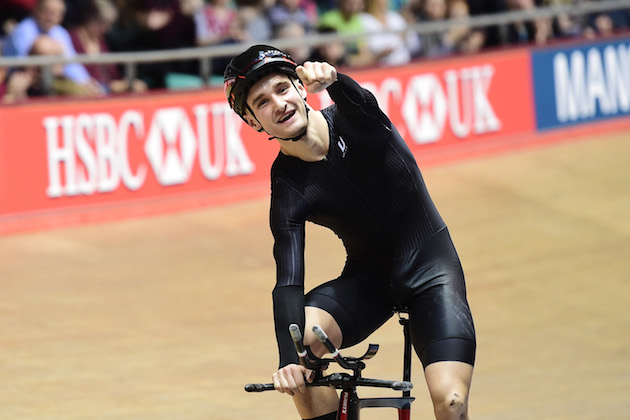We asked a world record holder how much power it takes to ride a 134.5kg concrete bike
World Hour record holder Dan Bigham says he'd like to take it for a spin


Nowadays when looking to get your hands on a road bike most people consider three things; the bike's weight, its aerodynamics and probably most importantly, are you going to have to remortgage the house to pay for it?
Although in the case of the Play to DIY crew over on YouTube, none of the above came into the decision making process when they drew up plans to build what they say is the world's first ever rideable concrete bike. So we had to find out what it'd take to ride it at race pace.
The bike
Weighing in at 134.5 kilograms, the fully concrete bike created by the group took two months to build and according to them, is fully functional.
A feat which is remarkable in itself considering that it would take 20 UCI regulation weight road bikes to match the weight of the concrete machine.
“The weight of 134.5 kg makes it very unusual but its construction process is extremely entertaining. We experimented a lot to show you this result and I hope you enjoy it,” said Play to DIY on their YouTube channel.
We're confident that the bike they created won't be making into our best road bikes list any time soon, but it is able to carry out pretty much everything that you would expect from your average bike. It rolls along in a slightly bumpy way and you’re able to turn the pedals with relative ease making it live up to the designers fully functional claim.
Another impressive element of the bike's design is that a percentage of the final machine was assembled from recycled materials picked up from old bikes including the steel frame and screws. Any parts of the bike which aren't concrete consist of pipes and plywood.
The latest race content, interviews, features, reviews and expert buying guides, direct to your inbox!
However, users would need to avoid particular road surfaces that may result in the bike crumbling.
Current hour record holder, Dan Bigham, doesn’t see that as being a turn off to taking it out for a spin. When we asked him whether he would give it a go, “Definitely!” said Bigham.
Watts required
Naturally we wondered what it would take to power this up to normal road riding speeds.
Bigham, who is also a performance engineer for Team Ineos, was kind enough to calculate, using a bit of guesstimating for rolling resistance and aerodynamic drag, just how much power you would need to put into the bike , something which isn’t as daunting as it sounds.
A rider putting out 500 watts would take 41 seconds to get the concrete bike up to 35kph.
By comparison a normal road bike would take just nine seconds to accelerate up to that speed.
If you then kept on putting out 500 watts a full minute after you'd started you would have accelerated the concrete bike up to just 37kph, while on a normal bike you'd be travelling at 49kph.
The only plus of all this is that because the whole system is a lot heavier if you stop pedalling it'll take a longer to slow down on the concrete bike than a regular one - something that would be further assisted by the fact the bike seems to have no brakes.
With that in mind, we'll let you take the first go, Dan.

Dan Bigham is a multiple-time national champion and current world hour record holder as well as a performance engineer at Ineos Grenadiers. An aerodynamicist by trade he spent time working in Formula 1 at Mercedes before switching his focus to cycling. He first came to prominence when he and the KGF team stormed to victory in the team pursuit at the National Championships in 2017.

After previously working in higher education, Tom joined Cycling Weekly in 2022 and hasn't looked back. He's been covering professional cycling ever since; reporting on the ground from some of the sport's biggest races and events, including the Tour de France, Paris-Roubaix and the World Championships. His earliest memory of a bike race is watching the Tour on holiday in the early 2000's in the south of France - he even made it on to the podium in Pau afterwards. His favourite place that cycling has taken him is Montréal in Canada.